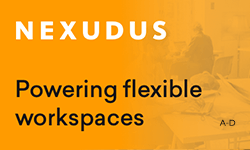It didn’t take long for 2017 to be coined ‘the year of the great retail apocalypse.’ Retailers closed an unprecedented number of stores with many filing for bankruptcy (such as Toys 'R' Us), whilst shopping malls simultaneously faced growing pressure to survive declining demand for physical retail space.
Diversification of tenants and technological enhancements might have been pursued by shopping centers as survival strategies in the past, but now are we seeing coworking spaces enter the mix. Coworking operators are taking space in shopping centers and shopping centers are developing their own coworking brands.
Why are Shopping Centers an Option for Coworking Spaces?
Retailers are taking less space and more space is available. Shopping center investment slowed over the past few years and renting space has become cheaper. Forecasts back in 2015 predicted a 20-25% rental decrease in Hong Kong. In 2016 retail investment in the Netherlands was down by 40%. In 2017 Manhattan retail rents fell by 13.4%, Canada had an average 30% retail vacancy rate, Australia’s retail investor intentions dropped by 10% and UK shopping center investment fell by 45%. Now in 2018, the likes of Ginza High Street in Japan are set to hit their lowest rent rates towards the end of the year.
Shopping malls have already tried filling space with hospitality and leisure facilities in the form of restaurants, cinemas, bowling alleys and even indoor ski facilities. However, these offerings aren’t quite enough to avoid the approximate 30% closure of space required for shopping center supply to meet tenant demand.
E-commerce giants continue their notorious online role as the major driving force behind decreasing demand for physical retail space, not to mention the shift in consumer spending from goods to lifestyle experiences. Further diversification is required and it’s starting to take the shape of coworking spaces.
Shopping Mall Owners and Coworking Brands
Westfield, in partnership with Forest City, is one of the first major retail outlets to develop their own coworking brand. In 2015, Bespoke opened on the 4th floor of Westfield San Francisco Centre. The 40,000 sq ft space is designed specifically as a retail-tech ecosystem supporting coworking, events, demos and pop up shops. The space is home to corporate and start-up members spanning industries such as payments, artificial intelligence, virtual reality, experiential, e-commerce, retail analytics and more. Bespoke hit full capacity after just 6 months.
For Bespoke, the main opportunity lies in bridging the gap between startups and big-box retailers. Kimiko Thornton, Senior Director of Innovation at Bespoke highlights, “Bespoke focuses on converging the digital and physical by curating a portfolio of members who are actively working to improve the retail landscape. Members are selectively identified by Bespoke and are connected to the C-Suites of Fortune 500 companies through our corporate innovation tours. Through this program, members benefit from access to retail executives and the opportunity to run pilots in a multi-faceted, consumer-facing environment. Retailers benefit first-hand from early access to the latest retail innovations.”
So, why would a shopping center invest in their own coworking brand instead of letting space to an operator? Kimiko notes some of the benefits: “Driving thought leadership in the industry, bringing in over 100k incremental visitors to our Centre annually, and getting early access to test and support retail innovators are just a few of the benefits. By being connected, we’ve given our startups the opportunity to run successful trials throughout our properties. Examples include Hemster, the on-demand alterations service and July Systems, the retail industry’s best location intelligence and engagement platform.”
In terms of membership types, private offices have been Bespoke’s highest area of demand; offices sold out before opening and an additional office suite was built quickly. With that being said, Kimiko explains how “demand can shift from one type of membership to another within a matter of months. This is why creating a flexible space is so important; we can easily adapt to fluctuating demand. Members do get acquired and outgrow us into their own offices, but we encourage this as we welcome fresh talent on a rolling basis.”
Atmosphere is another coworking space owned by a shopping center, situated outside Moscow’s city center towards the southwest where no coworking spaces have ventured before. The space features a conference hall and is ran by Atmosphere’s multi-business mother company, Tashir, renowned for its largest chain of shopping malls in Russia.
George Engibaryan, Business Development Manager at Atmosphere, explains how “Atmosphere is part of Tashir’s aims to diversify its assets. Running our own coworking space allows us to do this without sharing revenues with an operator. The coworking market in Moscow is still in its early development stages, meaning Atmosphere is a good business opportunity given the current low supply of operators.” Similarly to Bespoke, Atmosphere is located on a higher floor (6th), which might typically be associated with less tenant demand. Yet in this case, Atmosphere benefits from ‘a perfect oval shape and lot of natural light under a panoramic roof’.
The principle challenge faced by Atmosphere is the coworker mindset that business is done within the city center, rather than outside it. George addresses this issue by highlighting how members can avoid time wasted in congested traffic and still enjoy a workspace with a nearby cinema, restaurants and supermarkets.
Atmosphere initially experienced high demand for private offices and currently operates at 80-85% occupancy, but they now see a more equal distribution of demand amongst desk and membership types with open areas preferred by freelancers. Although there is no strict member vetting process, Atmosphere attracts innovative startups through their internal investment fund and explicitly excludes companies making excessive phone calls to avoid disruption to other members.
















